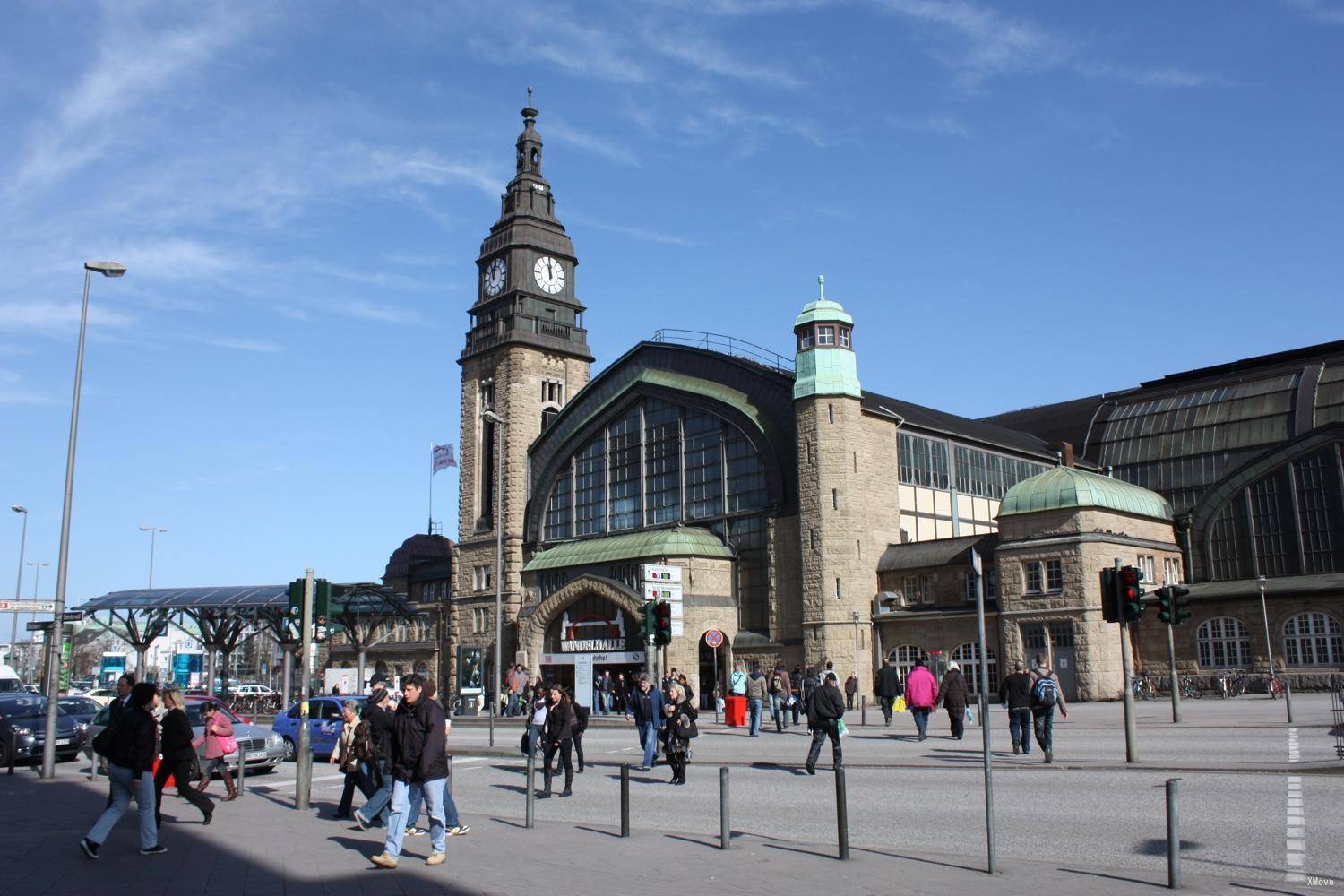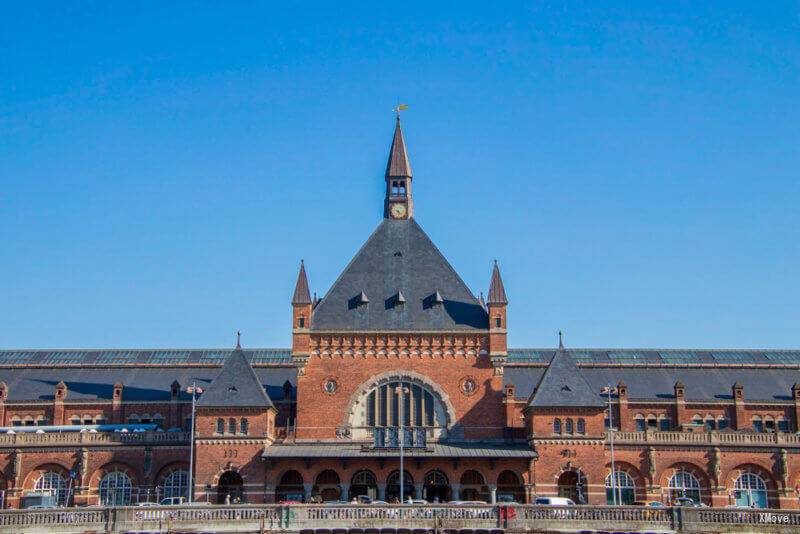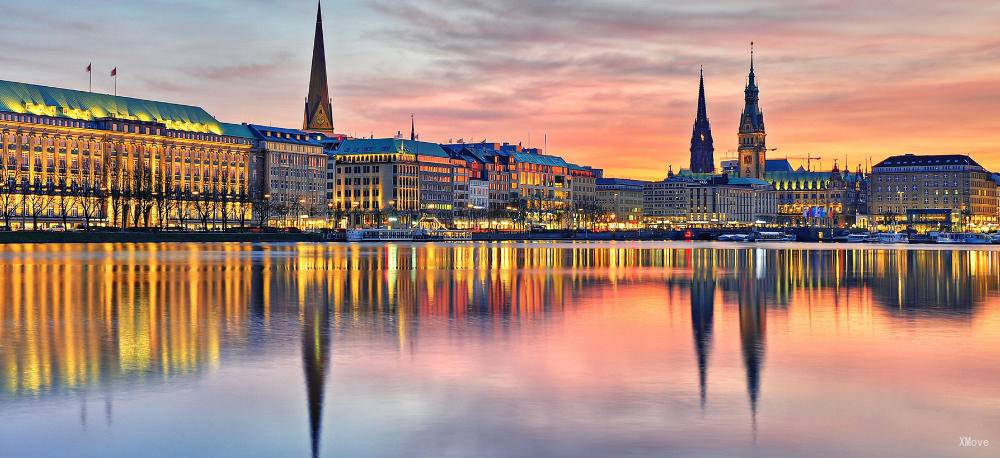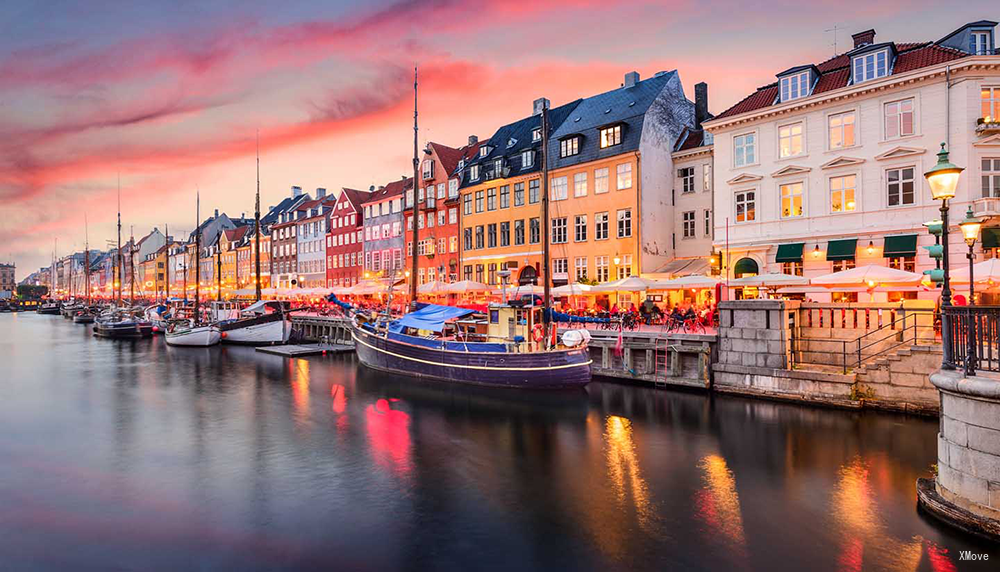Hamburg Central to Köbenhavn H: Trains, Buses, Fares, Today's Connections, Routes, Duration, Types of Trains, Station Guides, Tips, Journey
Germany Train Tickets
Scan QR code, download G2Rail App to see Hamburg Central's more live update, station guide, plan and photos



Train schedule Hamburg Central(Hamburg Hbf) to Köbenhavn H
Popular train routes departing from Hamburg Central(Hamburg Hbf)
* Muenster Westf Hbf(Münster(Westf)Hbf)
* Berlin (Main Underground)(Berlin Hbf (Tief))
* Golm
* Essen Central(Essen Hbf)
* Vienna Central Station(Wien Hbf)
* Frankfurt Central(Frankfurt(Main)Hbf)
* Koeln Hbf(Köln Hbf)
Popular train routes arriving in Hamburg Central(Hamburg Hbf)
* Strasbourg
* Wismar
* Offenburg
* Fredericia St
* Amsterdam Centraal
* Fulda
* Bad Malente Gremsmuehlen(Bad Malente Gremsmühlen)
Popular train routes departing from Köbenhavn H
* Berlin Central Station(Berlin Hbf)
* Höganäs
* Bremen Central(Bremen Hbf)
* Duesseldorf Hbf(Düsseldorf Hbf)
* Amsterdam Centraal
* Cottbus(Cottbus Hbf)
* Halmstad Central(Halmstad C)
Popular train routes arriving in Köbenhavn H
* Odense St
* Moenchengladbach Hbf(Mönchengladbach Hbf)
* Utrecht Centraal
* Dresden Central(Dresden Hbf)
* Chur
* Landgraaf
* Gdynia

Hamburg Central
Hamburg Hauptbahnhof is the main railway station in Hamburg, Germany. The Hamburg Central Station (Hamburg HBF) is operated by DB and has an average of 480,000 passengers per day. The station is one of Germany's major transportation hubs, connecting long-distance intercity expressways to the city's U-Bahn and S-Bahn rapid transit networks.
It is located in the heart of Hamburg in the Hamburg-Mitte district. Hamburg Central Station is a direct station (not a terminal) with 1-14 platforms (Gleis) under huge historical glass and steel buildings. The platform is located below the street and enters from the lobby on the crossover street. The ticket office, DB lounge and luggage lockers are located in the flyover hall. There is a train poster on each platform (Wagenstandsanzeiger) telling you where to stand so that when the train comes in, you can get on the right place. The station has a large DB ticket office that sells domestic and international tickets. There are ATMs around the station. If you need to leave your luggage, you can use the luggage locker.
Free WiFi is available at the station. There are many dining options in the station, including McDonald's.
Hamburg Central Station is one of the largest railway stations in northern Germany, connecting Denmark with Central Europe. Berlin, Frankfurt, continue to Stuttgart and Munich, and continue to the Ruhr area and Cologne's Bremen have permanent InterCityExpress lines.
The northern ICE train connects Hamburg to Aarhus and Copenhagen in Denmark and Kiel. There are also several intercity passenger train routes. The station is a hub to and from Scandinavia. In addition to intercity rail services, the station is also the intersection of urban rapid transit systems: Hamburg S-Bahn (suburban railway) and Hamburg U-Bahn (underground network). The station is located in Wallring in the heart of Hamburg, between Altstadt and St. Georg. Nearby is the Deutsches Schauspielhaus theatre, art gallery and museum of applied art.
The station is located in the heart of a busy shopping district.
If you have a first-class long-distance ticket for the DB train or its partner railway, you can use the DB first class lounge, free tea, coffee, beer and snacks as well as WiFi. Follow the signs to the DB Lounge. It is usually open daily from 06:00-22:00.
Hamburg Central - Station Guide | Departures and Arrivals | Popular RoutesKöbenhavn H
Located in the city centre, all trains pass through this station or start here. There are many cities in Denmark that can be reached by trains. In addition to the Danish cities, there are also famous cities such as Malmö in Sweden, Hamburg in Germany and Amsterdam in the Netherlands. All light rail express trains (except F line) all pass this site
There are many trains from Copenhagen to various cities in Denmark. There are trains to all parts of the country, including 12 minutes to the airport, and some important attractions, City Hall, pedestrian street, round tower and port are all within walking distance. Going to the little mermaid is relatively far away.
The international route is Copenhagen → Hamburg, passing through Lübeck. Or the night train departs from Copenhagen to Hamburg, Amsterdam, Frankfurt, Dresden, Prague and other places, or express trains to the Nordic cities of Gatpo Stockholm.
Köbenhavn H - Station Guide | Departures and Arrivals | Popular Routes

Hamburg (English: , German: [ˈhambʊʁk] ; Low Saxon: Hamborg), officially the Free and Hanseatic City of Hamburg (German: Freie und Hansestadt Hamburg; Low Saxon: Friee un Hansestadt Hamborg), is the second-largest city in Germany after Berlin and 8th largest city in the European Union with a population of over 1.8 million. One of Germany's 16 federal states, it is surrounded by Schleswig-Holstein to the north and Lower Saxony to the south. The city's metropolitan region is home to more than five million people. Hamburg lies on the River Elbe and two of its tributaries, the River Alster and the River Bille. The official name reflects Hamburg's history as a member of the medieval Hanseatic League and a free imperial city of the Holy Roman Empire. Before the 1871 Unification of Germany, it was a fully sovereign city state, and before 1919 formed a civic republic headed constitutionally by a class of hereditary grand burghers or Hanseaten. Beset by disasters such as the Great Fire of Hamburg, North Sea flood of 1962 and military conflicts including World War II bombing raids, the city has managed to recover and emerge wealthier after each catastrophe. Hamburg is Europe's third-largest port. Major regional broadcaster NDR, the printing and publishing firm Gruner + Jahr and the newspapers Der Spiegel and Die Zeit are based in the city. Hamburg is the seat of Germany's oldest stock exchange and the world's oldest merchant bank, Berenberg Bank. Media, commercial, logistical, and industrial firms with significant locations in the city include multinationals Airbus, Blohm + Voss, Aurubis, Beiersdorf, and Unilever. The city hosts specialists in world economics and international law, including consular and diplomatic missions as the International Tribunal for the Law of the Sea, the EU-LAC Foundation, and the UNESCO Institute for Lifelong Learning, multipartite international political conferences and summits such as Europe and China and the G20. Both former German Chancellor Helmut Schmidt and Angela Merkel, German chancellor since 2005, were born in Hamburg. The city is a major international and domestic tourist destination. It ranked 18th in the world for livability in 2016. The Speicherstadt and Kontorhausviertel were declared World Heritage Sites by UNESCO in 2015.Hamburg is a major European science, research, and education hub, with several universities and institutions. Among its most notable cultural venues are the Elbphilharmonie and Laeiszhalle concert halls. It gave birth to movements like Hamburger Schule and paved the way for bands including The Beatles. Hamburg is also known for several theatres and a variety of musical shows. St. Pauli's Reeperbahn is among the best-known European entertainment districts.
Hamburg - Guide, Attractions, Tours, Sightseeings | Train from/to Hamburg | Popular RoutesCopenhagen (Danish: København [kʰøpm̩ˈhaʊ̯ˀn] ) is the capital and most populous city of Denmark. As of July 2018, the city has a population of 777,218 (616,098 in Copenhagen Municipality, 103,914 in Frederiksberg Municipality, 43,005 in Tårnby Municipality, and 14,201 in Dragør Municipality). It forms the core of the wider urban area of Copenhagen (population 1,320,629) and the Copenhagen metropolitan area (population 2,057,737). Copenhagen is situated on the eastern coast of the island of Zealand; another small portion of the city is located on Amager, and it is separated from Malmö, Sweden, by the strait of Øresund. The Øresund Bridge connects the two cities by rail and road. Originally a Viking fishing village established in the 10th century in the vicinity of what is now Gammel Strand, Copenhagen became the capital of Denmark in the early 15th century. Beginning in the 17th century it consolidated its position as a regional centre of power with its institutions, defences and armed forces. After a plague outbreak and fire in the 18th century, the city underwent a period of redevelopment. This included construction of the prestigious district of Frederiksstaden and founding of such cultural institutions as the Royal Theatre and the Royal Academy of Fine Arts. After further disasters in the early 19th century when Horatio Nelson attacked the Dano-Norwegian fleet and bombarded the city, rebuilding during the Danish Golden Age brought a Neoclassical look to Copenhagen's architecture. Later, following the Second World War, the Finger Plan fostered the development of housing and businesses along the five urban railway routes stretching out from the city centre. Since the turn of the 21st century, Copenhagen has seen strong urban and cultural development, facilitated by investment in its institutions and infrastructure. The city is the cultural, economic and governmental centre of Denmark; it is one of the major financial centres of Northern Europe with the Copenhagen Stock Exchange. Copenhagen's economy has seen rapid developments in the service sector, especially through initiatives in information technology, pharmaceuticals and clean technology. Since the completion of the Øresund Bridge, Copenhagen has become increasingly integrated with the Swedish province of Scania and its largest city, Malmö, forming the Øresund Region. With a number of bridges connecting the various districts, the cityscape is characterised by parks, promenades and waterfronts. Copenhagen's landmarks such as Tivoli Gardens, The Little Mermaid statue, the Amalienborg and Christiansborg palaces, Rosenborg Castle Gardens, Frederik's Church, and many museums, restaurants and nightclubs are significant tourist attractions. The largest lake of Denmark, Arresø, lies around 27 miles (43 kilometers) northwest of the City Hall Square. Copenhagen is home to the University of Copenhagen, the Technical University of Denmark, Copenhagen Business School and the IT University of Copenhagen. The University of Copenhagen, founded in 1479, is the oldest university in Denmark. Copenhagen is home to the FC København and Brøndby football clubs. The annual Copenhagen Marathon was established in 1980. Copenhagen is one of the most bicycle-friendly cities in the world. The Copenhagen Metro launched in 2002 serves central Copenhagen. The Copenhagen Metro is scheduled to expand radically with the opening of the City-ring line during fall 2019, the new line will connect all inner boroughs of the city by metro, including The Central Station, and will open up 17 new stations for Copenhageners. The new metro line is a part of the city's strategy to transform mobility towards sustainable modes of transport such as public transport and cycling as opposed to automobility. Additionally the Copenhagen S-train, the Lokaltog (private railway) and the Coast Line network serves and connects central Copenhagen to outlying boroughs. The Copenhagen-Ringsted Line will relieve traffic congestion in the corridor between Roskilde and Copenhagen. Serving roughly two million passengers a month, Copenhagen Airport, Kastrup, is the busiest airport in the Nordic countries.
Copenhagen - Guide, Attractions, Tours, Sightseeings | Train from/to Copenhagen | Popular Routes
Germany Train Tickets
Scan QR code, download G2Rail App to see Hamburg Central's more live update, station guide, plan and photos



Hot Journeys
* Milan -> Turin(Torino)
* Rome(Roma) -> Milan
* Rome(Roma) -> Florence
* Milan -> Florence
* Pisa -> Florence
* Seoul(서울) -> Jeonju Si(전주시)
* Seoul(서울) -> Busan(부산)
* Rome(Roma) -> Venice(Venezia)
* London(London) -> Brussels(Bruxelles)
* Dusseldorf(Düsseldorf) -> Frankfurt Airport(Frankfurt Flughafen)
* Paris -> Nice
* Rome(Roma) -> Venice(Venezia)
* Frankfurt Airport(Frankfurt Flughafen) -> Cologne(Köln)
* Venice(Venezia) -> Rome(Roma)
* Naples -> Florence
* Busan(부산) -> Seoul(서울)
* Milan -> Venice(Venezia)
* Avignon -> Paris
